There were many, many highlights to my trip to Southern California for Costume College in July/August, but one of the best was going to LACMA to see Reigning Men, and discovering that there was a major exhibition on Hawaiian featherwork as well – and we’d come just in time for the last day!
I enjoyed Reigning Men (though it definitely struggled with curatorial cohesion), but I loved NÄ Hulu Ali‘i. I’ve seen many pieces of Hawaiian featherwork in different museums, but never so many in a single exhibition. And Hawaiian featherwork is a phenomenal craft. The skill involved in making ‘ahu ‘ula (cloaks) and mahiole (helmets) is breathtaking.
In Hawaiian culture, featherwork was a sign of mana (spiritual prestige) and status. Feather cloaks, helmets, and lei were worn only by chiefs. They were passed down from generation to generation, warriors would seize cloaks and helmets from defeated rivals, and feather items were given as gifts to convey favour.
‘Ahu ‘ula and mahiole are made by weaving feathers on to a netting of ‘olona (which is a type of nettle, a fact that makes me ridiculously happy).
The yellow feathers are from o’o, which as you’ll notice if you look at images of them, only have tiny little patches of yellow feathers. One cloak could take feathers from tens of thousands of birds, which were caught, the yellow feathers plucked, and then released to re-grow more feathers.
Red feathers came from ‘i’iwi and ‘apapane and because they were more plentiful than yellow, were less prized. The more yellow in a cloak, the more mana, and the higher the status of the wearer.
The importance of feathered cloaks, and the links between the birds that made them and the end result was so marked that the original latin name given to the ‘i’iwi bird was Vestiaria coccinea: Vestiaria meaning clothing, and coccinea meaning red.
Captain Cook noticed Hawaiian featherwork as soon as he arrived in Hawaii, and was delighted when he was given a number of pieces of featherwork, including a cloak and helmet, by the Chief KalaniÊ»ÅpuÊ»u. The cloak and helmet were at Te Papa in Wellington until this year, when they were repatriated to Hawaii.
Many other cloaks, helmets and were given to European visitors over the years, and made their way into museum collections over the years. Others remained in Hawaii, and most of those are now at the Bishop Museum.
The featherwork tradition did not stay static as the Western influence became more pronounced. Cloaks, lei, and kahili continued to be made, and incorporated Western motifs (note the hearts in the cloak three photos up) introduced feathers, and ‘fashionable’ silhouettes.

Cape, 1882, associated with Queen Kapi’olani. Pheasant and chicken feathers, velvet, silk, and frogging closures. Bernice Pauahi Bishop Museum
Note the statement shoulders on this cloak, typical of late 1930s fashions:
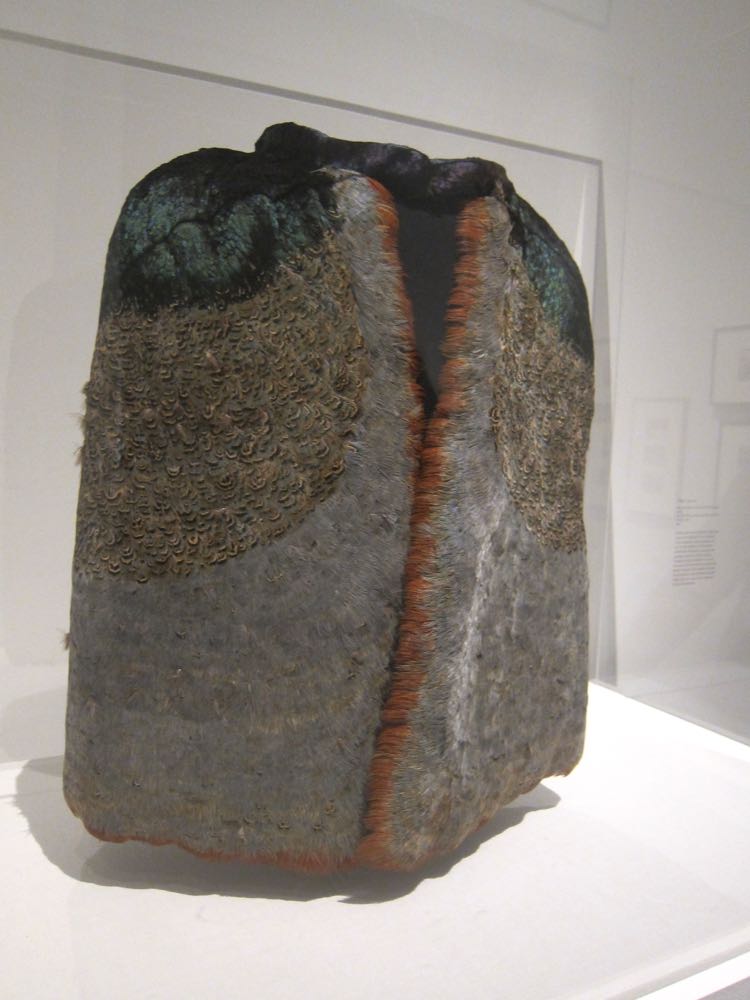
Cape worn by Hawaiian activist Alice Kamokila Campbell, 1930s-40s. Pheasant feathers on wool with silk. Honolulu Museum of Art
More about Hawaiian featherwork:


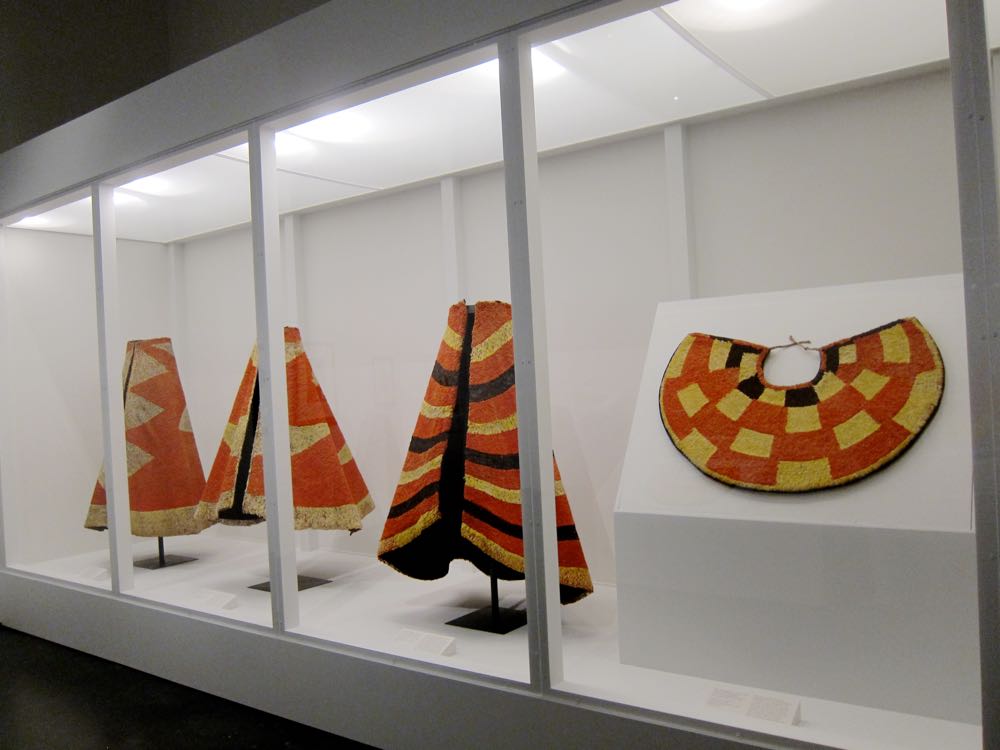

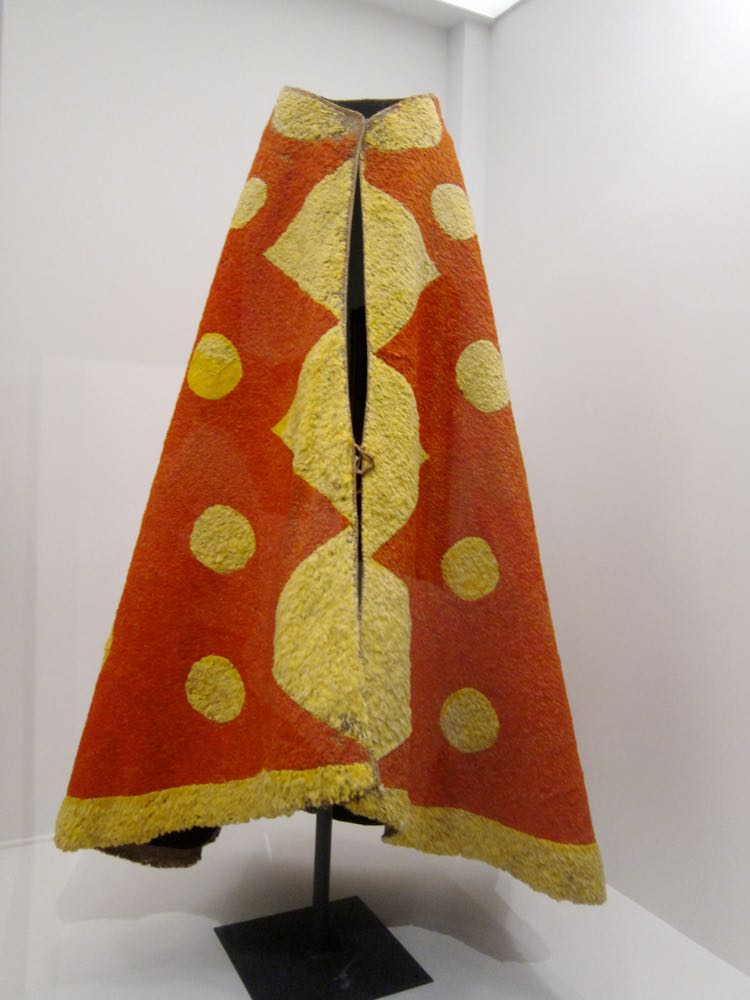

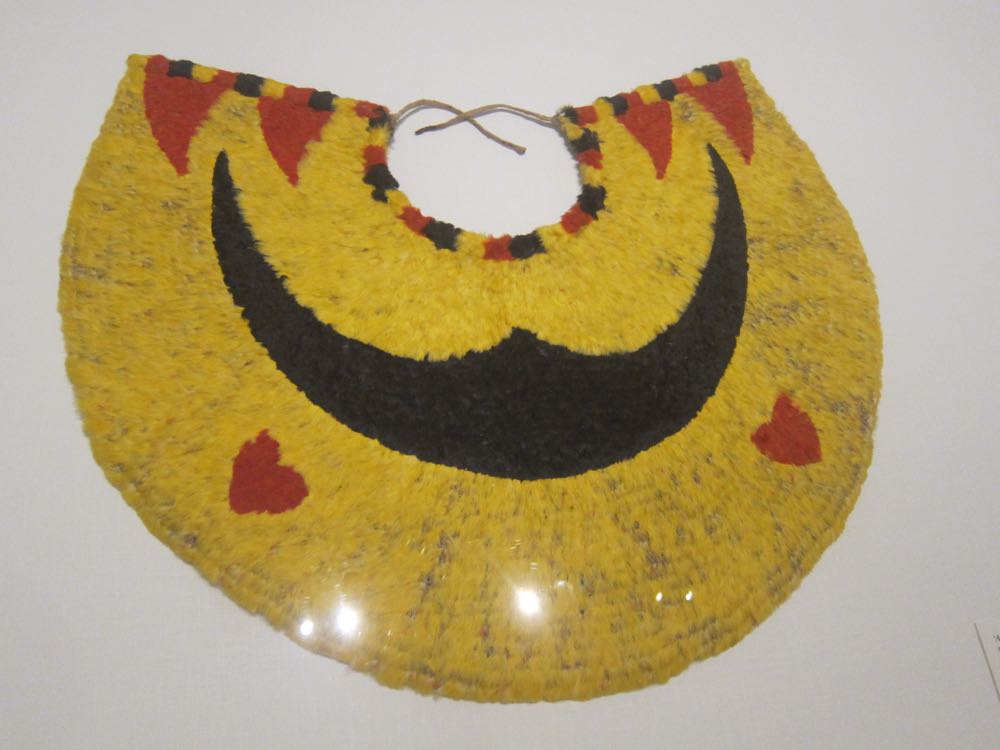
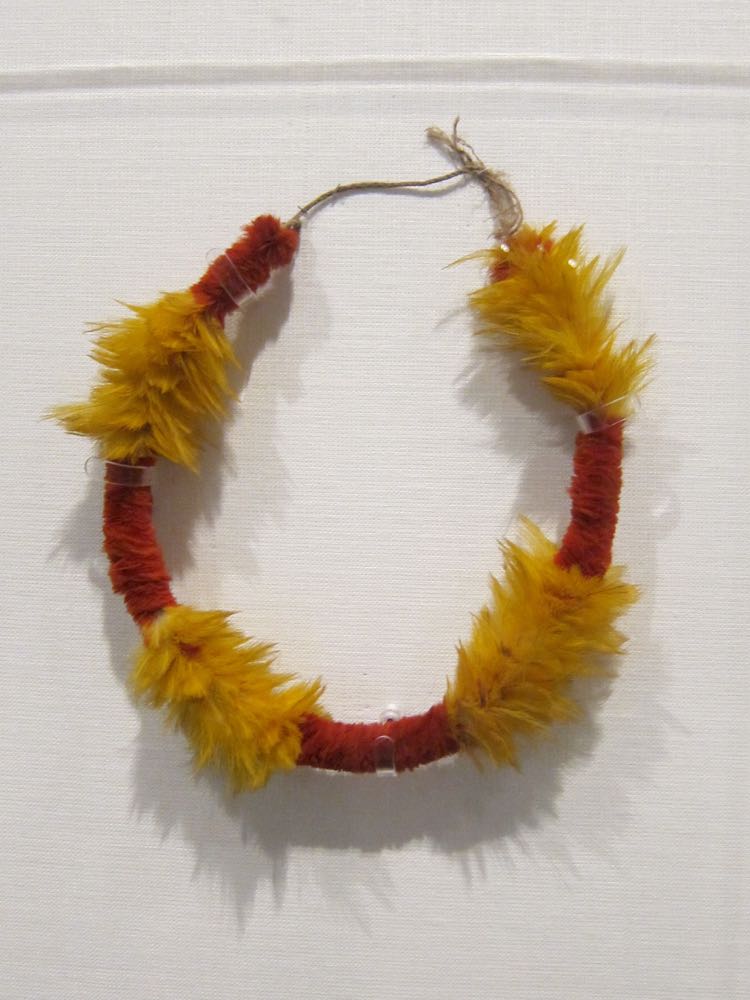


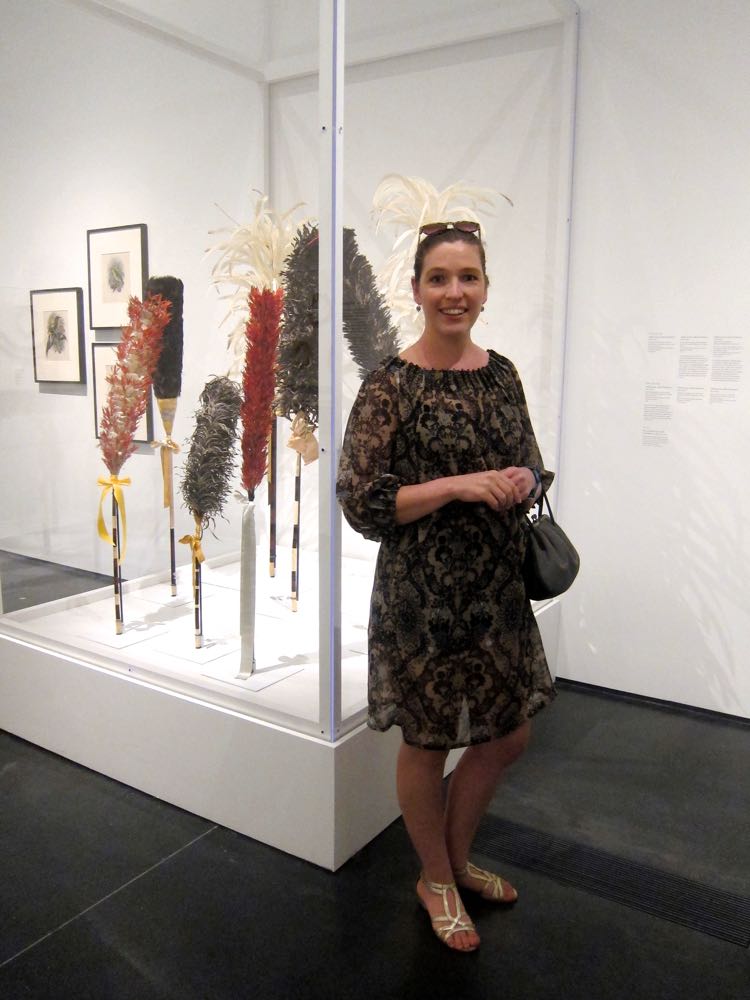
Admire, indeed! Aren’t they stunning? And I like that they are woven on nettle fibre, too!
Wow! Thank you for sharing this.
Stunning work indeed. I believe the Aztecs and Maya also did featherwork, but I don’t think we have surviving pieces from those cultures (or at least not large pieces in excellent condition). Thanks for the photos!
This is so beautiful. Thank you for sharing it. Funny, I was listening to Israel Kamakawiwo’ole when I opened this post. I wish I had known about the exhibit before it ended.
Wow so stunning. I didn’t know they even make that.
Neato mosquito!
Ouch. That’s a rather dreadfully ironic compliment, considering that mosquitos are primarily to blame for the decline/extinction of most of the species that these items are made from!
That is a very unique cultural piece of fashion and status.
Sarah